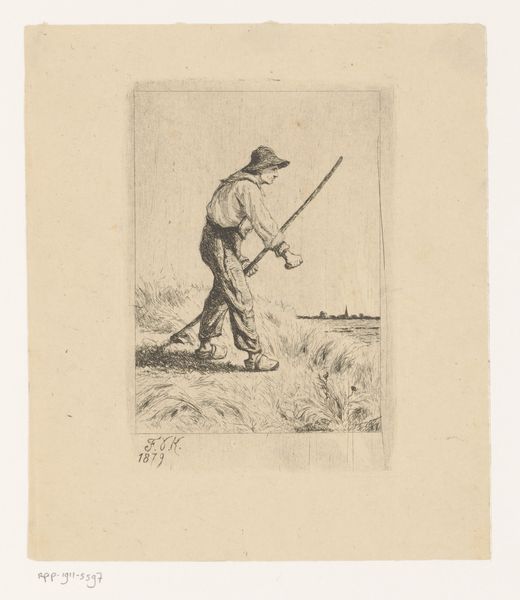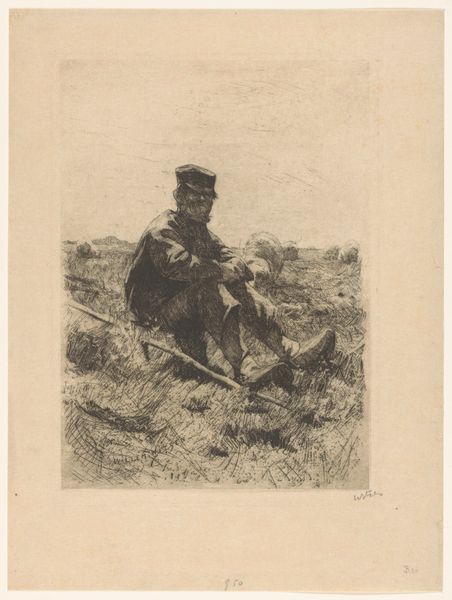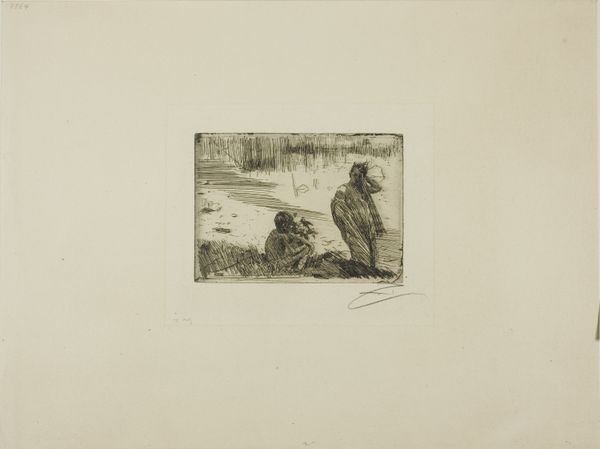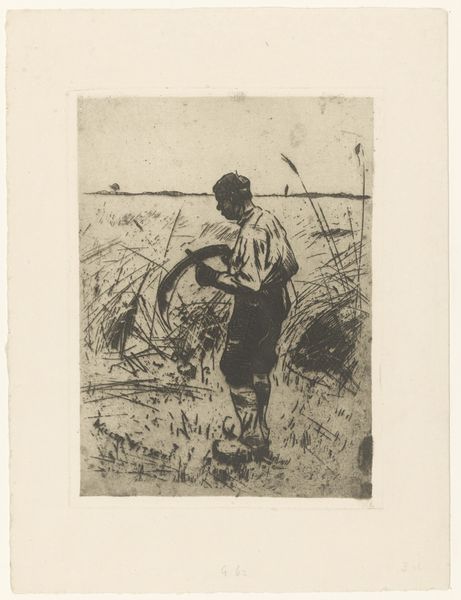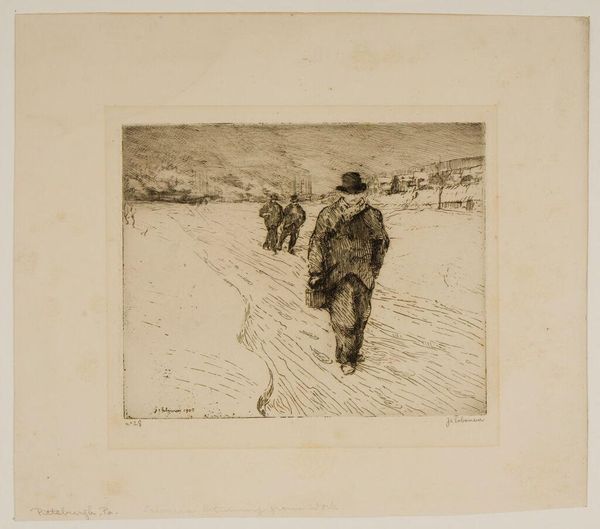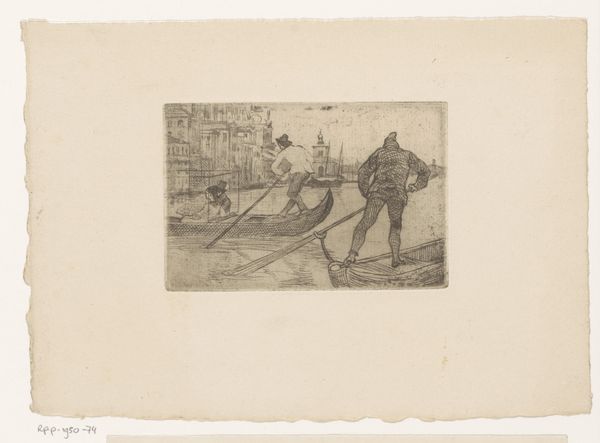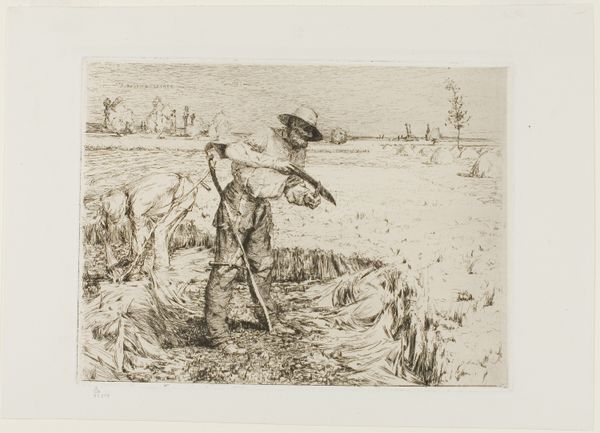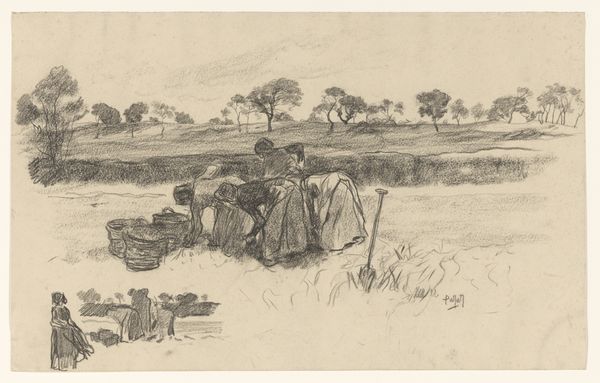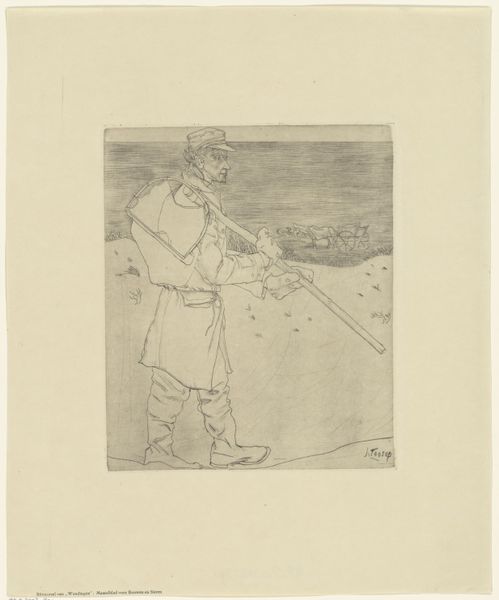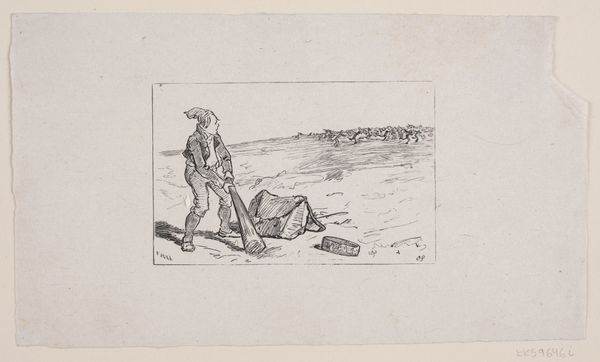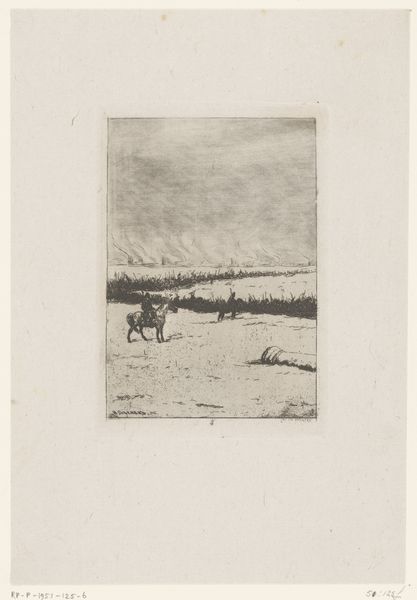
print, etching
# print
#
etching
#
landscape
#
etching
#
figuration
#
realism
Dimensions: height 88 mm, width 118 mm
Copyright: Rijks Museum: Open Domain
Editor: So, here we have "Farmer on the Ice," an etching by Gerard Altmann, created sometime between 1887 and 1935. There's a real sense of quiet solitude in this scene. It shows a figure standing on the ice next to a cart full of stuff, looking out towards the horizon. How would you interpret this work in its historical context? Curator: Well, what strikes me first is the seeming mundanity of the subject. It’s not heroic; it's a farmer, working. Think about the rise of Realism as a movement during that time. Artists were consciously shifting focus from grand historical or mythological scenes to depicting everyday life, especially the lives of the working class. This print could be viewed as participating in a wider visual discourse. Why do you think Altmann chose this particular subject? Editor: Maybe to bring attention to the common laborer, the ordinary person? Was there an intended political statement perhaps? Curator: Potentially, yes. Art at this time was becoming increasingly linked with national identity and ideas of "the people". Think of how the romantic idealization of rural life existed alongside the harsh realities of agricultural labor. Images like this could either glorify that life, or offer a more subtle commentary. How do you see this artwork functioning within the art market of the time? Editor: That's a great question. Prints were more accessible than paintings, so this might have reached a broader audience, spreading a message about the common man? It could be interpreted as social commentary but available for purchase and appreciation. Curator: Precisely. And that accessibility in turn affects its message. Whose story is being told, and who gets to see it? The answers can be quite complex. I've found this particular tension often visible in artwork. Editor: This has really highlighted for me how a seemingly simple image can reflect so many complex social and historical undercurrents! Curator: Exactly. Looking at art with that kind of lens is what makes it so perpetually engaging.
Comments
No comments
Be the first to comment and join the conversation on the ultimate creative platform.
